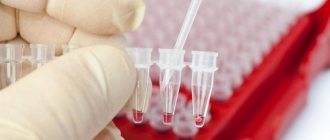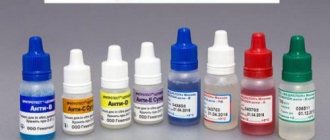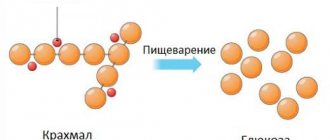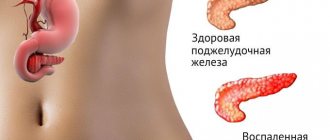What is amylase?
Amylases (alpha-amylase) are a group of enzymes that serve to break down complex carbohydrates inside the pancreas, which is an exocrine gland.
The enzyme is synthesized by acinar cells and then passes through the pancreatic ducts to reach the digestive tract. Amylases are also produced by the salivary glands, small intestinal mucosa, ovaries, placenta and liver. Pancreatic and salivary isoenzymes are detected in the blood at high concentrations by examination.
Under normal conditions, amylase is present in small amounts in the blood and urine, however, when the cells of the pancreas have some problem, such as pancreatitis or when the pancreas is blocked by a stone, or in rare cases by a tumor, the enzymes enter the blood circulation more easily, so their concentration increases as in blood and in urine (amylase leaves the body through urine).
Amylase testing is often used by doctors to diagnose pancreatitis. Pancreatic amylase testing (amylase P isoenzyme) is most useful for laboratory diagnosis of acute pancreatitis.
Total serum (blood) is still the most widely used method for diagnosing acute pancreatitis and is accurate to 95% (accuracy of a diagnostic test refers to its ability to provide true values).
Normal blood amylase levels
By gender, alpha-amylase standards are practically the same. A slight difference in indicators is allowed in women during the perinatal period. This is due to changes in hormonal status, body weight, gastronomic preferences, which affects the qualitative and quantitative content of biologically active substances in the body. Amylase concentrations in pregnant women are assessed as part of routine screenings.
If there are significant discrepancies between the results in relation to the reference values, the pregnant woman is indicated for hospitalization with additional examination. Women in the premenopausal period and during menopause are recommended to monitor amylase levels in the blood and urine annually. The reason is hormonal changes in the female body.
According to the age criterion, the level of pancreatic enzyme increases as the child grows older. Stable indicators are recorded in adults from 18 to 70 years. In people 70+, an increase in values is associated with age-related changes in the body, and is not considered a pathology.
The measurement value for alpha-amylase in a biochemical blood test is U/L (units per liter). Some laboratories measure using the International System of Units (SI). To convert units/l to the SI system, the result must be multiplied by a factor of 0.688.
Table of normative indicators of total amylase
| Infants up to one year old | Children from one to 10 years old | Children and adolescents up to adulthood | Adults about 18 to 40 years old | Elderly people (70+) |
| up to 8 units/l | up to 30 units/l | from 25 to 40 units/l | from 25 to 125 units/l | up to 160 units/l |
Deviations in the analysis results, upward or downward, by more than 30 units in adults, and by 10 units in children, indicate the development of inflammatory processes, acute conditions and chronic diseases. If a high level of pancreatic enzyme is a clinical sign of pathology, then low amylase in the blood does not indicate a specific disease.
In this case, the analysis must be carried out several times. If alpha enzyme levels are consistently reduced, the patient is prescribed additional laboratory tests and hardware diagnostic procedures.
What are the reasons for increased amylase?
Reasons that cause an increase in the amount of alpha-amylase in the blood (increased blood amylase is considered to be numbers above 105 units/l for alpha-amylase and above 50 units/l for pancreatic amylase):
- Acute or chronic pancreatitis . With inflammation of the pancreas, the secretion of amylase by cells increases several times
- Cyst, tumor or stone in the lumen of the pancreas . A change in the structure of the gland causes compression of the glandular tissue and its secondary inflammation, which increases the secretion of amylase (amylase level reaches 150-200 units/l).
- Parotitis . Inflammation of the salivary glands also causes increased secretion of amylase.
- Peritonitis . With peritonitis, all organs of the abdominal cavity, including the pancreas, are subject to irritation and inflammatory changes. Such changes increase the activity of pancreatic cells, which leads to increased amylase levels in the blood test.
- Diabetes . Diabetes mellitus causes systemic metabolic disorders, including carbohydrate metabolism. Thus, not all amylase produced by the body will be rationally spent on converting starch into oligosaccharides, which will lead to an increase in its amount in the blood.
- Kidney failure . Since amylase is excreted from the body through the kidneys, insufficient kidney function will cause a delay and increase in the amount of enzyme in the blood. The reasons for the decrease in the amount of amylase in the blood are considered to be figures less than 100 U/L for alpha-amylase.
- Hepatitis in acute or chronic form . With hepatitis, carbohydrate metabolism is disrupted, which entails an increased load on the body's enzymatic systems, including amylase. For a certain time, the pancreas produces a sufficient amount of the enzyme, but subsequently begins to slow down the process of amylase synthesis, which will be reflected in its low amount in a blood test.
- Pancreatic tumors . Some tumors cause degeneration of pancreatic tissue, which makes amylase secretion impossible.
- Also, as a result of injuries, falls from a height and poisoning, amylase secretion may be impaired, either to a greater or lesser extent.
In our clinic, you can consult a gastroenterologist and undergo all the necessary tests, including ultrasound of the abdominal organs.
Pancreatic amylase
Pancreatic amylase is one of the types of amylase that is produced by the pancreas.
Synonyms Russian
P-amylase isoenzyme, pancreatic alpha-amylase, P-amylase, P-type amylase.
English synonyms
Pancreatic alpha-amylase, pancreatic AML, P-type amylase, P-type alpha-amylase, amylase isoenzymes, amylase isoforms.
Research method
Enzymatic colorimetric method.
Units
U/L (unit per liter).
What biomaterial can be used for research?
Venous blood.
How to properly prepare for research?
- Do not eat for 12 hours before the test.
- Avoid physical and emotional stress and do not smoke for 30 minutes before the test.
General information about the study
Amylase is a digestive enzyme that can break down carbohydrates.
The largest amount of amylase is found in the salivary and pancreas glands.
Amylase, which is produced in the pancreas, is pancreatic amylase (P-type) and is part of pancreatic juice. From the pancreas, pancreatic juice containing lipase passes through the pancreatic duct into the duodenum, where it helps digest food.
Amylase of the salivary glands - salivary amylase (S-type) - digests food starch in the oral cavity.
Normally, a small amount of amylase circulates in the blood. In this case, about 60% is salivary amylase (S-type), and the remaining 40% is pancreatic amylase.
When damage to the pancreas occurs, as in pancreatitis, or if the pancreatic duct is blocked by a stone or tumor, pancreatic amylase (P-type) begins to leak into the bloodstream in large quantities. There is no increase in salivary amylase activity.
Small amounts of amylase are also produced in the ovaries, intestines and skeletal muscles.
What is the research used for?
- An increase in the activity of pancreatic amylase in the blood without a change in the activity of salivary amylase confirms the pathology of the pancreas. For example, in acute pancreatitis, its activity in the blood can increase to 90% of the total amylase activity.
- For the diagnosis of pancreatitis in the postoperative period, when the activity of total amylase is increased.
- If pathology of the salivary glands, ovaries or bronchi is suspected.
When is the study scheduled?
- When the diagnosis of “acute” or “chronic pancreatitis” is confirmed.
- If you suspect a disease of the salivary glands and ovaries.
What do the results mean?
Reference values
| Age | Reference values |
| 1 – 10 years | |
| 10 – 18 years | |
| > 18 years old |
Interpretation of the results of the analysis for pancreatic amylase is carried out taking into account the assessment of the total amylase activity in the blood or urine. If the total amylase activity is increased and the activity of pancreatic amylase is decreased, then damage to the pancreas is unlikely and pathology of the ovaries, intestines, bronchi or other organs must be excluded.
Reasons for increased pancreatic amylase activity
- Acute pancreatitis. In this disease, the activity of pancreatic amylase can be significantly higher than normal and constitute a larger percentage of the activity of total amylase. However, in some patients with acute pancreatitis, amylase may increase slightly or even remain normal. In general, amylase activity does not reflect the severity of pancreatic damage in pancreatitis. For example, with massive pancreatitis, sometimes the death of most of the cells that produce this enzyme occurs, so its activity may not be changed.
- Chronic pancreatitis. With it, amylase activity is initially moderately increased, but then may decrease and return to normal as damage to the pancreas worsens.
- Decompensation of diabetes mellitus is diabetic ketoacidosis, both due to high sugar levels and due to the concomitant involvement of the pancreas in the pathological process.
- Trauma to the pancreas.
- Pancreas cancer.
- Blockage (stone, scar) of the pancreatic duct.
- Acute appendicitis, peritonitis.
- Perforation (perforation) of a stomach ulcer.
- Acute cholecystitis is inflammation of the gallbladder.
- Intestinal obstruction.
- Ruptured aortic aneurysm.
- Macroamylasemia is a condition where amylase binds to large proteins in the serum and therefore cannot pass through the glomeruli, accumulating in the blood.
Reasons for decreased pancreatic amylase activity
- Decreased pancreatic function.
- Cystic fibrosis (cystic fibrosis) of the pancreas is a severe hereditary disease associated with damage to the exocrine glands (lungs, gastrointestinal tract).
- Removal of the pancreas.
What can influence the result?
- Captopril, corticosteroids, oral contraceptives, furosemide, ibuprofen, and narcotic analgesics can increase amylase activity.
- Chronic renal failure sometimes leads to increased activity of pancreatic amylase.
- Elevated cholesterol can cause decreased activity of pancreatic amylase.
Important Notes
- In acute pancreatitis, an increase in pancreatic amylase activity is usually accompanied by an increase in lipase activity. The latter may be somewhat delayed, but lipase activity remains elevated longer.
- Amylase activity in children in the first two months of life is low; it rises to adult levels by the end of the first year.
Also recommended
- Total amylase in daily urine
- Serum total amylase
- Lipase
Who orders the study?
General practitioner, therapist, gastroenterologist, surgeon.
What to do if amylase is low?
Low levels of the enzyme are much less common than high levels. Such changes in the analysis are typical for pancreatic failure, cystic fibrosis, severe liver damage (liver failure), pancreaectomy (removal of the pancreas).
Increased blood cholesterol levels can lead to low pancreatic amylase levels. In children of the first year of life, the level of the enzyme is much lower than in adults. This is due to the fact that the food they receive is devoid of sufficient amounts of complex carbohydrates.
Additionally
Elevated enzyme values in the results of biochemical examination are determined much more often than low values. A high concentration of α-amylase indicates possible diseases:
- pancreatitis and pancreatic cancer;
- intestinal obstruction;
- diabetes mellitus and diabetic ketoacidosis;
- peptic ulcer of the duodenum and stomach;
- ectopic pregnancy;
- cholelithiasis and urolithiasis;
- CRF, chronic renal failure;
- alcoholism;
- parasitic infestations;
- mumps (mumps);
- appendicitis.
If the test results deviate from the norm, the patient requires additional examination.
What is dangerous about changes in amylase levels?
In itself, the condition when amylase is elevated does not have clinical consequences for the body, however, it is an important marker of pancreatic damage. If an increase in the enzyme index is detected, the analysis is usually monitored within 24 hours, which makes it possible to assess the dynamics of the pathological process.
A decrease in the level of the enzyme against the background of deterioration in the patient’s well-being indicates severe destruction of pancreatic tissue.
You should pay close attention to the situation. ‹ Previous page | Next page >
When is laboratory diagnostics necessary?
α-amylase is included in the list of indicators to be assessed as part of a biochemical blood test. This is a method of laboratory research of the physical properties and chemical composition of blood, which allows one to assess the functionality of internal organs and identify possible disorders.
The analysis is prescribed:
- for symptomatic patient complaints;
- for prevention purposes;
- to control the therapy.
The main direction of research into the digestive enzyme (pancreatic amylase) is the timely diagnosis and control of treatment of pancreatic diseases. Emergency diagnostics of alpha-amylase levels is carried out if:
- for acute inflammation of the pancreas (acute pancreatitis);
- inflammation of the serous covering of the peritoneum (peritonitis);
- ectopic pregnancy.
Important! With a high level of α-amylase in the blood against the background of acute pain in the left abdomen, radiating to the left clavicle and lower back, nausea and vomiting, accompanied by low-grade body temperature (37–38 °C), acute pancreatitis is 100% diagnosed.
Regular blood microscopy to determine the level of alpha-amylase is necessary for diabetics, patients with chronic pathologies of the pancreas and liver, and cancer patients. The blood sampling procedure is carried out in a laboratory, in the morning, and strictly on an empty stomach. To obtain objective final data, the patient is recommended to:
- three days before the analysis, eliminate fatty foods, hot seasonings and spices, and alcoholic beverages from the diet;
- stop taking medications (diuretics, enzymatic, hormone-containing, non-steroidal anti-inflammatory drugs);
- On the eve of the procedure, limit sports and other physical activities.
The duration of fasting before the study is 8–12 hours.









